The bane of my garden… SNAILS! It seems there are secret ninja snails and slugs who hang out in the ultimate hiding spot and SMS all their buddies to say: “Hey guys, she is planting seeds!”
I literally prepared my veggie boxes on Monday with fresh compost, on Tuesday I planted seeds… but on Wednesday when I went into my greenhouse there were slimy snail trails in every single box and seed tray!
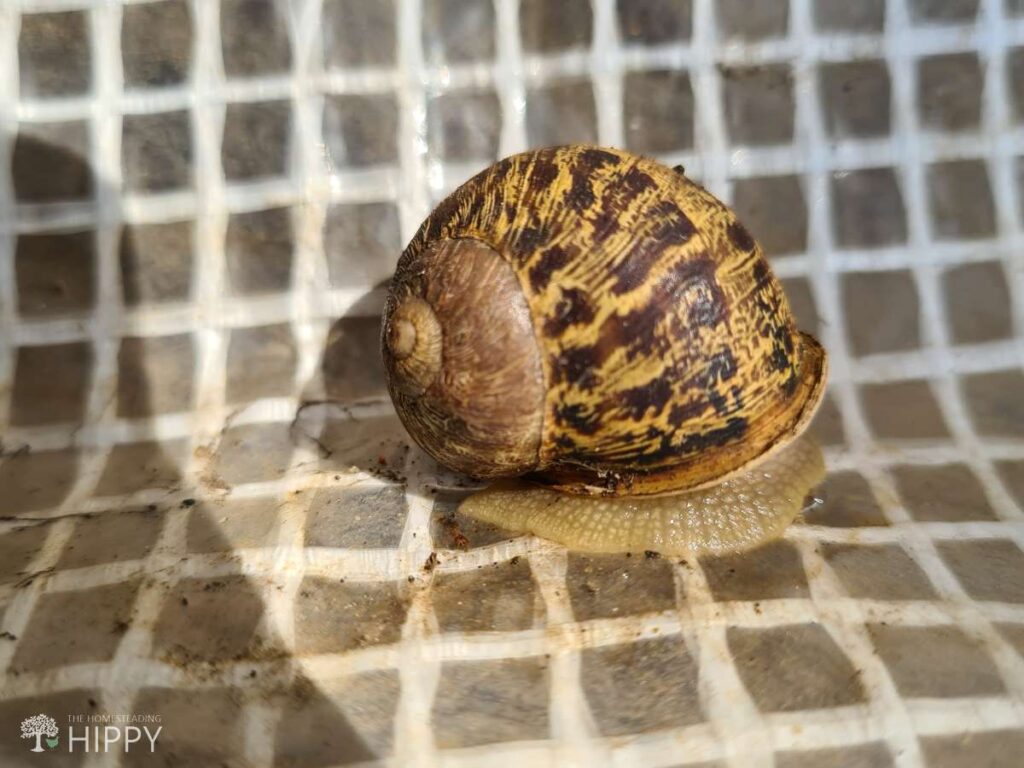
Now, as an adult, I see the damage they do to my garden, and even on my calmest days, I think back to the salt circles. The damage they cause to my well-tended vegetables and flowers and their disgusting snail trails are beyond frustrating.
I remember, as a child, just wailing on my older brothers, kicking, punching, and crying my heart out as they poured salt circles around poor snails who, in my childish mind, were just going about their sweet little lives.
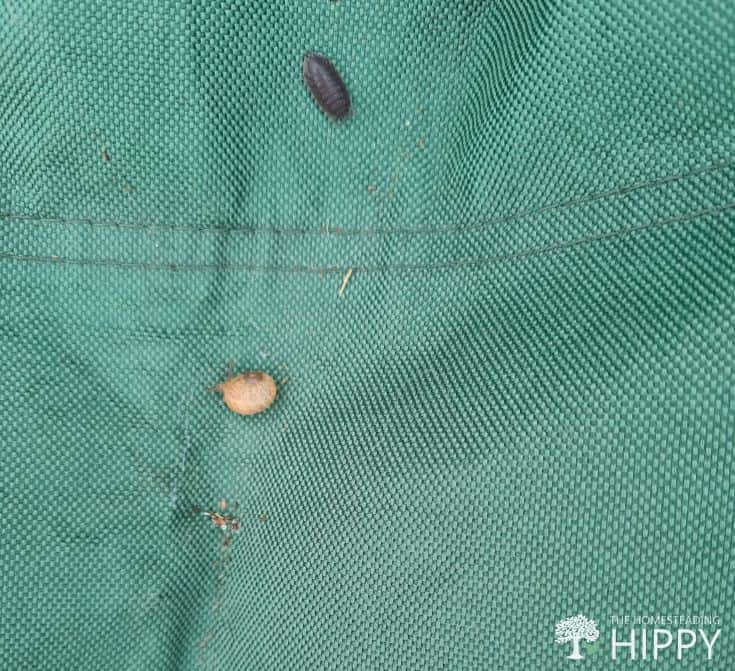
So, how can we keep snails and slugs away from our vegetable gardens, greenhouses, and gardens?
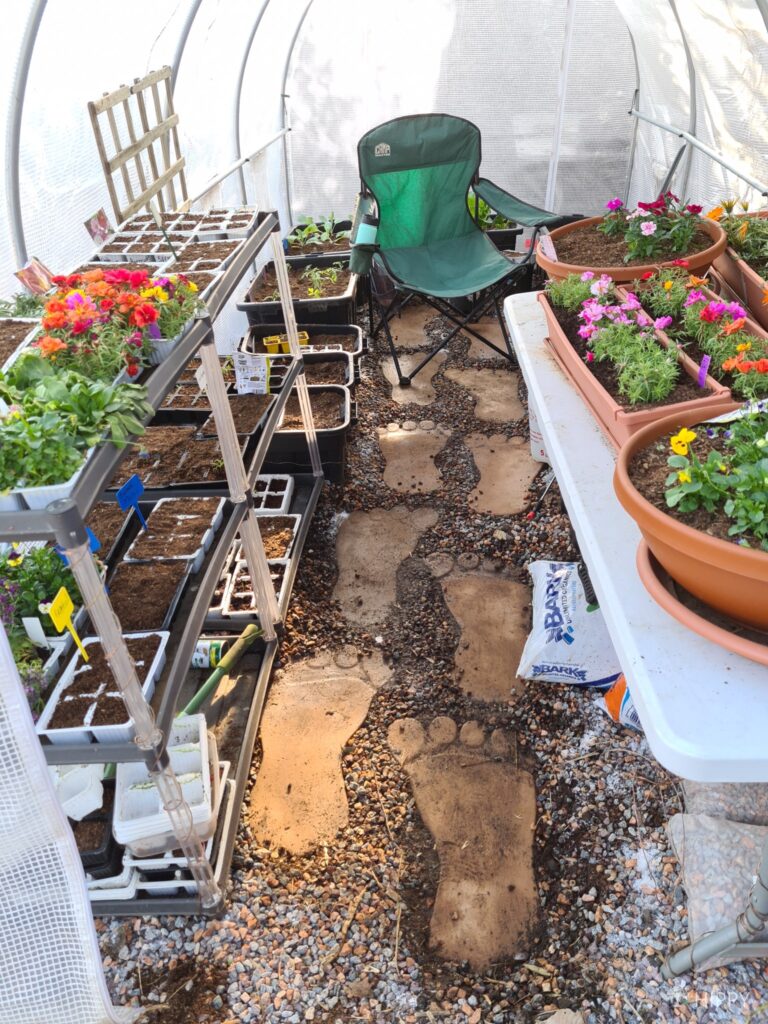
There are so many ways to rid your yard of snails and slugs; some are preventative, some are humane, and some are lethal.
I think it is important to tell you at this point that snails and slugs do not have complex nervous systems like people and other animals. I am very much a pacifist. I do not like hunting for fun or torturing animals to test makeup or any of that.
But scientists have tested the nervous system of snails and slugs, and they believe that snails and slugs may not experience pain when they are killed.
Research has shown that snails experience two basic needs, the need to eat and the need to reproduce. Based on this research, I am going to give you all the avenues and let you decide what you feel comfortable with.
1. Salt
I figure we may as well start with what I have already mentioned, and get it out the way.
Ordinary table salt or coarse salt dehydrates the snails rapidly when they come into contact with the salt. It’s actually awful to watch, as the snail’s bubble and froth like Epsom salt.
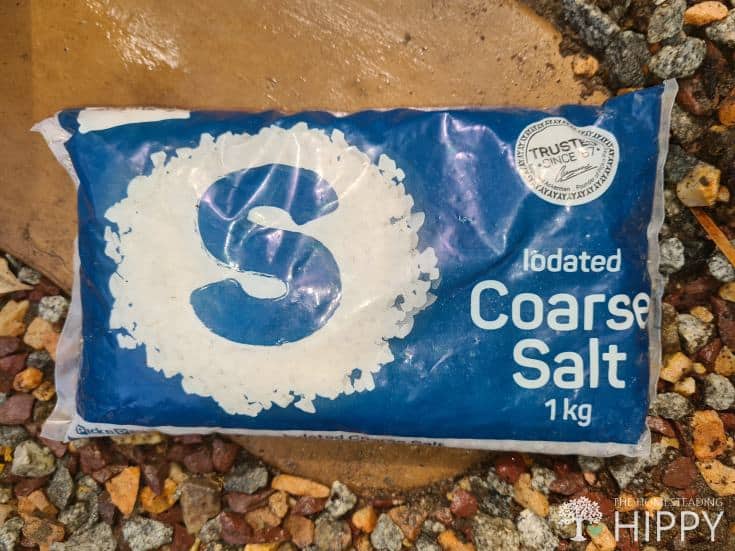
If you choose to go this route, you will need to put salt on the ground around your benches. It is important that you do not put salt into the beds as the salt in the soil can damage the plants you are trying to grow.
You will also have to replace the salt frequently as it dissolves with each watering or rainstorm.
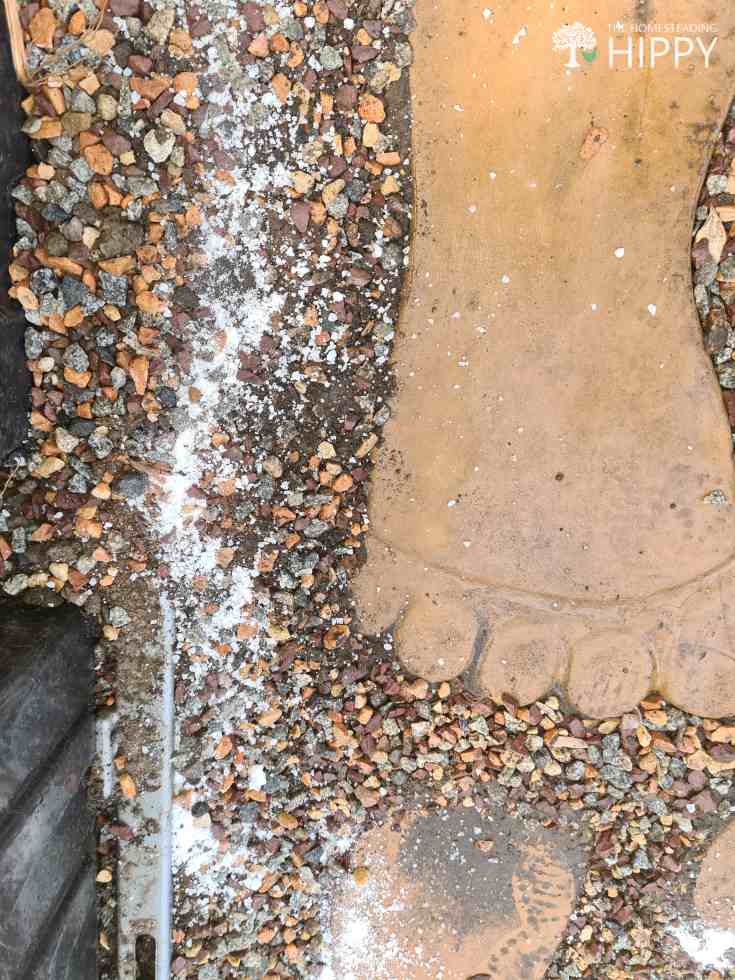
2. Wool Pellets
Wool pellets are a great way to get rid of snails and slugs because they absorb the mucus snails produce. They are made of 100% raw, compressed sheep’s wool and are 100% biodegradable. As they break down, they provide really good nutrition for plants.
Of course, nothing is perfect… Wool pellets absorb all moisture, including rain! They can hold 1.5 times their own weight in water. However, while they are wet, they will not deter snails or slugs.
You can also add wool pellets as dense mulch for your plants. It is good for the plant’s growth, and it deters snails and slugs.
3. Keep Your Beds, Greenhouses, and Vegetable Gardens Clean
Slugs and snails love to hang out in damp, sheltered places. Your greenhouse is a paradise for snails because they are protected from heat, exposure, and predators. Regularly clean out shelves, mop up pools of water, and keep all the surfaces dry.
Pull out all the weeds in your garden so that the snails and slugs have nowhere to hide from the elements and predators.
4. Avoid Smooth Surfaces
Snails and slugs hate gravelly surfaces. They would much rather camp out on a smooth surface.
In my own greenhouse, my plants and vegetables are grown in extra large plastic storage containers. I do this to preserve my soil quality because when we get rain, we get RAIN! The soil here is also extremely dense clay; it is not easy to work with at all. This means paradise for snails.
I compensate for this by surrounding my beds (containers) with coarse gravel with eggshells mixed in. I add shells as we use eggs. This makes for a very snail and slug unfriendly environment.
Using gravel also aids in drainage, as the water will seep through the gravel into the soil beneath without providing moist spots for snails to settle in.
Wood chips also work well. But it is a bit harder to keep them dry and keeping your barrier dry is very important. Remember I said they love damp!
You can also use seashells if you live near the ocean. If you can collect shells yourself, consider yourself lucky. Buying seashells can be very expensive.
5. Set Beer Traps
If you do not like the death by salt method, this is probably not going to be any more palatable for you.
Snails and slugs are drawn to the scent of beer. Half bury deep containers that are half-filled with beer around your garden or greenhouse.
A soda bottle that has about the top ¼ cut off will work just fine. If you only want to catch snails and slugs, bury your trap leaving about a centimeter above ground. If you have a beetle problem as well bury the container to the top.
Snails and slugs will be drawn to the scent and when they go to drink the beer they will fall in and drown.
As I said, if you do not like the death by salt method, this may not be your first choice, but it is very effective.
6. Coffee Grounds
Snails do not like the pungent smell of black coffee grounds. When you put on a fresh pot of coffee, do not throw away the old coffee grounds; set them aside and sprinkle them over your plant and vegetable beds.
As I write this, I can’t help but think: “Yep, another good reason to drink coffee.”
7. Ash
If you like burning a good bonfire, or you have a fire barbeque or enjoy a good fire in the fireplace, do not throw the ash away.
Ash is also a good deterrent for slugs and snails. You can use ash on the floor and in your beds.
Ash is actually very good for plants. If you live in a high fire-risk area, you only need to watch the ground after a fire to see how green the grass is when it grows back after a fire. This is because the ground is given a great nutritional boost by the ash left after a fire.
8. Cover Slime Trails with Sawdust or Sand
Snails and slugs also enjoy compost. However, plain beach sand holds no interest to them. Again, this trick has to do with texture. By covering their trails with sand or sawdust, you will make them uncomfortable enough to not want to follow their original path.
Think about when you go to the beach. I am very tactile defensive. I cannot stand the gritty feel of the sand and salt on any part of my body. On my feet? Do not even go there!
For snails and slugs, this is a million times worse. Their bodies are essentially sticky water. Sand gets stuck to their bodies making life very uncomfortable. If you are using unwashed sea sand, the salt content will also kill the snails and slugs.
Sand can be very pretty as a greenhouse floor, but it is easily compacted with watering. You will need to regularly loosen and turn the sand for it to keep its undesirable allure for snails and slugs.
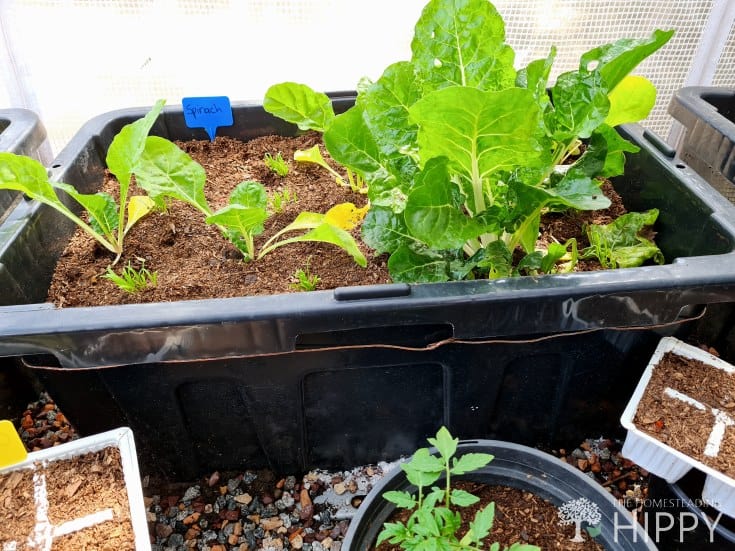
9. Make Copper Barriers
I know, you are thinking, Huh?
Copper is a very effective repellant because gastropods get an electric shock when they come into contact with copper. The shock is triggered by their moist bodies coming into contact with the metal.
They will not try to cross that barrier twice!
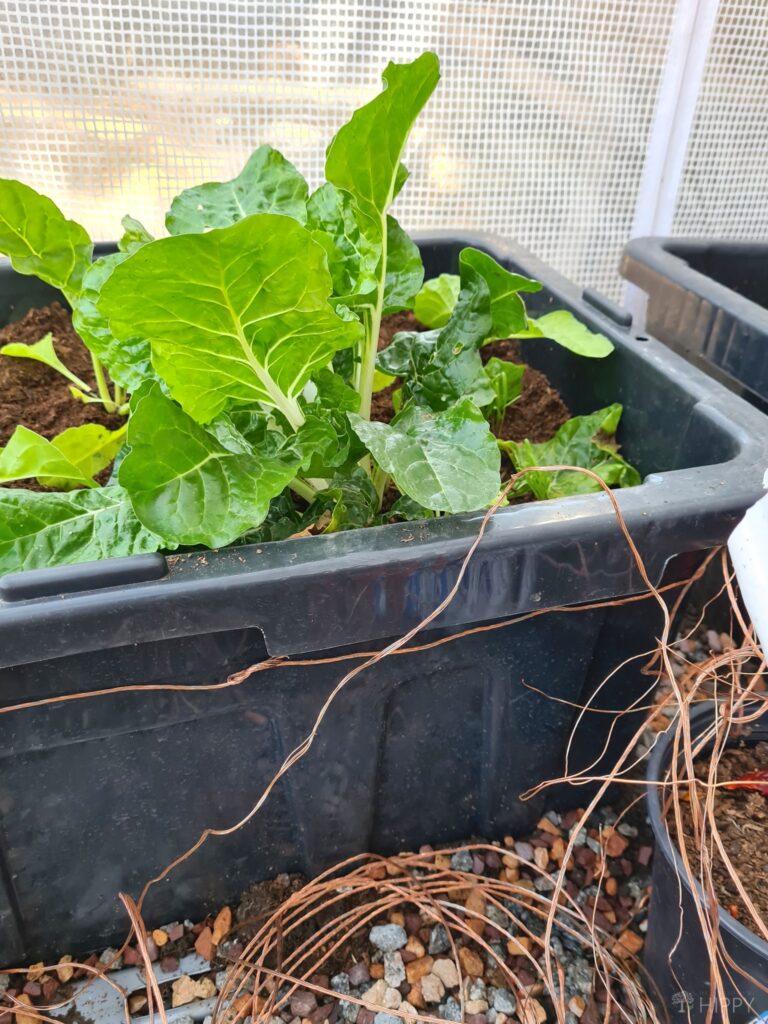
Build a barrier that surrounds your whole greenhouse, veggie patch, or flower bed to ensure your plants are safe from these unwelcome intruders.
Or use copper tape around benches or greenhouse beds.
Make sure the barriers are clear of avenues for the snails to climb over, such as wood or plant material that has fallen across the copper barrier.
10. Diatomaceous Earth
Diatomaceous earth does not kill snails, but it does separate the snail from the shell causing it to dehydrate.
It is not a pleasant experience for the snails, but they will not die.
You will still have to collect the shell-less snails to get rid of them. But it discourages snails from getting to your plants.
11. Introduce Biological Warfare on the Slimy Pests
If you want to get serious with your beds, you may want to introduce nematodes on your plants and in the beds.
Nematodes are macro-organisms that live in soil, and penetrate snail’s bodies through their respiratory opening. Once in the snail’s bodies, they secrete bacteria that infect the snail; the snails and slugs then decompose from the inside out. The pest dies after a few days.
While the nematodes are in the bodies of the snail’s or slugs, they reproduce rapidly. When the host is dead, the nematodes feast on the body. Once the pest is dead the reproduced nematodes emerge and immediately begin their quest for a new host.
They are safe for plants, pets, and humans. They are very inexpensive; you can even breed them yourself – this will happen naturally once you have introduced a batch to your beds.
12. Use Wheat Bran or Corn Bran
Making small circles of wheat or corn bran are irresistible to slugs and snails. They ultimately cause desiccation and death. You will have to replace the circles regularly, but any predator who eats the remains of the slugs or snails will not be harmed in any way.
This non-toxic method is very nutritious to the predators that feed on the snails and slugs.
13. Chemical Pesticides
When you visit a link in this article that takes you to a different website where you can purchase something, I may earn a commission. Read my full disclosure for more details.
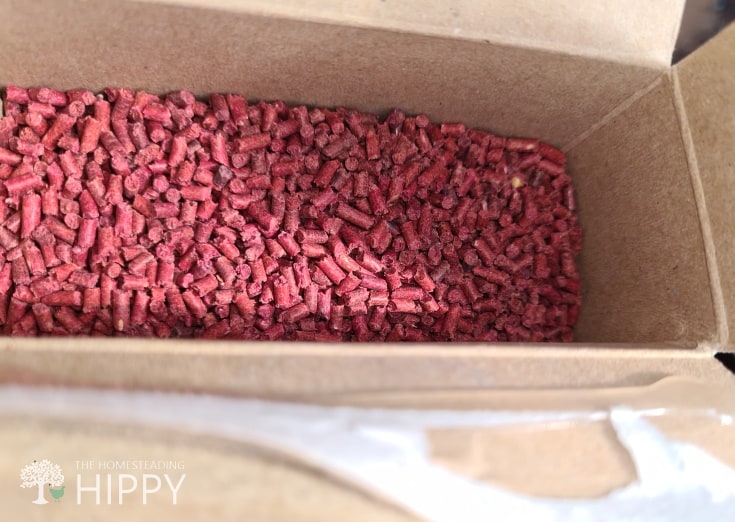
There are only two chemical pesticides that are effective on snails and slugs. These are Metaldehyde (Slug-Em, and Deadline M-Ps) and iron phosphate (Sluggo).
Both of these, when properly spread across the bed evenly, are very effective in killing snails and slugs. They are both also not dangerous to pollinators. However, they are somewhat toxic to animals. Pets, chickens, and livestock can all become sick (or worse!) if they eat it. When wet and mixed in with the soil, it is not easy for animals to distinguish as dangerous.
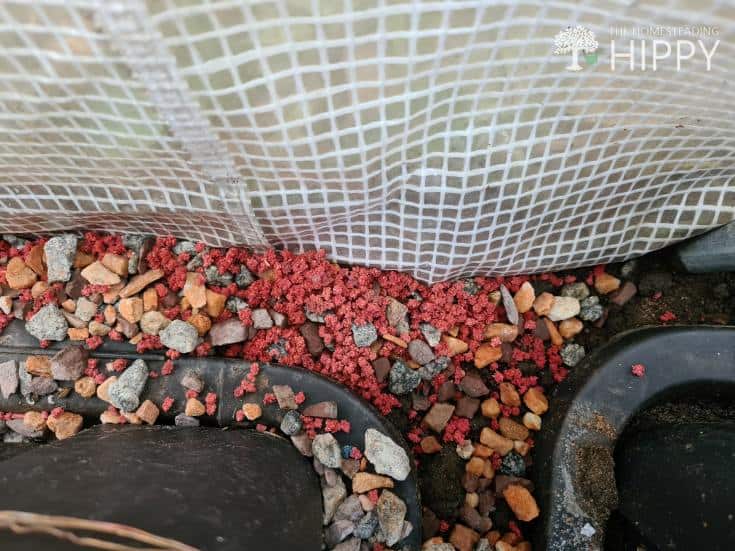
Sluggo is not as toxic to pets as Slug-Em or Deadline M-Ps. The snail or slug does not drop dead on the spot. They retreat to the dark damp places they hide in during the day and die there.
Sluggo is a more expensive chemical solution. It also needs to be reapplied more frequently than Slug-Em or Deadline M-Ps.
14. Keep Your Gardening Equipment Clean
You can take all the precautions possible, setting barriers, traps, salt, and any of my other suggestions, and still have snails in your beds if you do not clean your equipment after each use.
You will not always notice small snails hanging onto your gardening tools, and you will definitely not see eggs you have picked up in one place and shifted from bed to bed.
I keep my tools clean and dry, and I also store them in a waterproof sealed storage container. It does not take much time to clean up when gardening, and it is worth the time and effort.
While this will not stop snails and slugs from entering your beds to feast, it will reduce cross “infection” from bed to bed.
Clear away ground-level boards, weeds, cuttings, and other debris. Remove any hiding places.
Remove snails and slugs as soon as you find them.
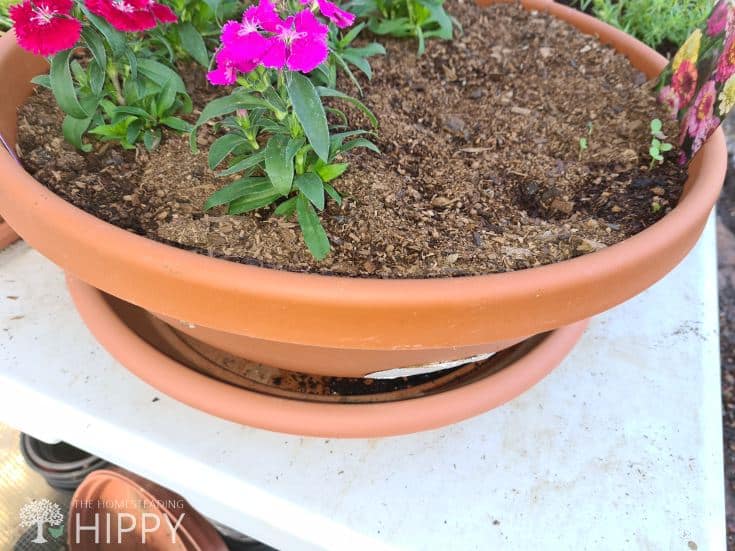
15. Ensure You Have Good Drainage
Because snails and slugs are attracted to damp environments, you should always make sure you have good drainage in place.
Don’t overwater your plants, create drainage ditches around beds, and use trays under pot plants.
16. Use Seaweed
Seaweed is more practical than spreading salt across your beds or ground. Salt washes away or seeps into the ground quickly. Seaweed retains its saltiness for a long time. You can make barriers using seaweed that will last.
If you live near the beach, take an early stroll with the dog and gather the free seaweed that washes up on the beach every night.
17. Avoid Using Wooden Benches
Wooden benches rot over time with exposure to the elements. Snails and slugs are attracted to the damp wood and the wood provides good cover for the snails, slugs, and their eggs.
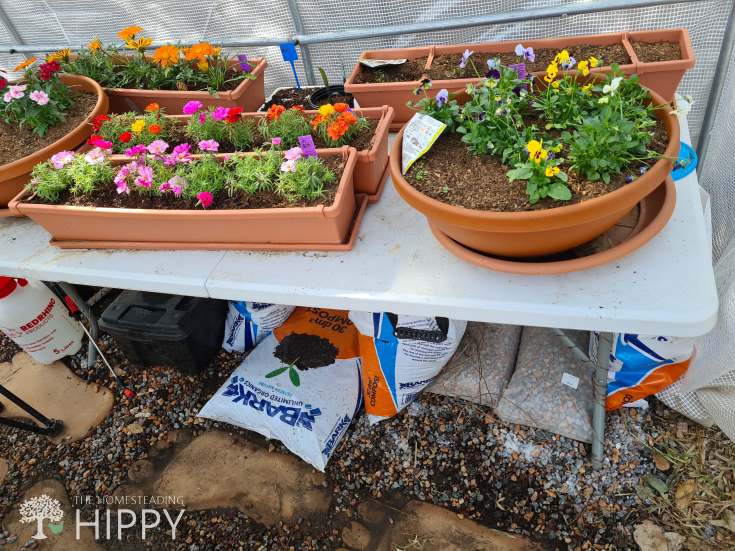
Instead of using wooden benches, use metal or plastic benches. I use a large, 8-seater fold-up camping table for my pots and seedlings. Snails still try their luck from time to time, but they are dissuaded by the rocky floor of my greenhouse and the aromatic plants I grow.
18. Water in the Morning
Remember that snails are mostly nocturnal and love damp surfaces. If you water at night you are literally giving them an ideal home.
Rather water your garden early in the morning so that the sun can dry any puddles and the surface of the beds. Leaving the sand coarse and dry and therefore undesirable to snails and slugs.
19. Use Drip Irrigation
Drip irrigation is perfect for minimizing damp surfaces, puddles, and moisture from your greenhouse.
With watering, we all tend to over water. I did for many years as an amateur in spite of my dad telling me over and over not to over water.
Plants need just enough water to make the surface soil damp. Drip irrigation is the most effective and efficient way to prevent moisture buildup.
20. Protect the Legs of Your Benches
Remember that the legs of your benches are probably smooth, perfect highways for these slimy muckers.
Treat the legs with black soap, glue eggshells on the legs, or use copper tape on the legs to make the snails uncomfortable.
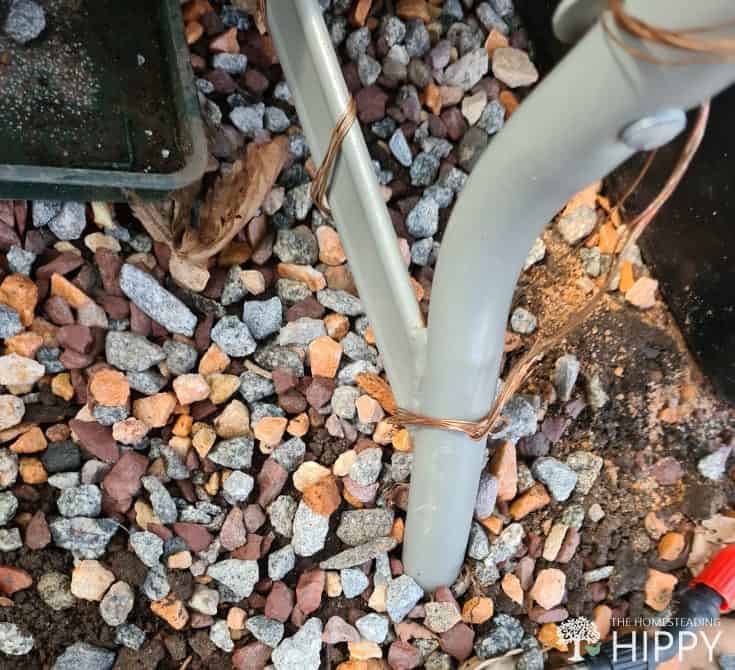
21. Seal Gaps Under Doors and Windows
I sadly do not have a fancy greenhouse, mine is very utilitarian. I grow our families’ vegetables in there. I do often take my tea and go sit inside for an hour or so in the morning. Nothing feels better than a shot of highly oxygenated air in the morning.
Unfortunately, the doors zip down so the base of the doors cannot be sealed. I zip the doors closed and place bricks over the small lip of the door to keep my cats and dogs out. Snails always get in if I am not diligently on the prowl.
If you have a serious greenhouse with glass walls, doors, and windows, you still are at risk of an invasion. I am sure we have all experienced the yuk of a snail trail in our homes at least once.
Snails and slugs get in through gaps on windowsills and under doors.
Make sure you seal your windows properly and put what I only know of as a ‘wind snake’ down over the gap under the door. That is what my gran called it. It is a long, heavy sack resembling a snake that you place up against the bottom of the door to prevent drafts from coming in through the gap under the door.
They are also good for keeping out slugs and snails.
22. Introduce Natural Predators
Slugs and snails are a major food source for centipedes, marsh flies, and various beetles. Frogs and hedgehogs also love snails, and they are way cuter than both snails and slugs!
Attracting these as well as birds to your garden can also help keep the number of snails and slugs to a minimum.
NOTE: Please check with your local animal control agency whether it is legal to own and keep hedgehogs. In South Africa it is illegal as they are considered a great risk for extinction.
23 Plant Plants That Snails and Slugs Hate
There are several things you could grow that will be harmful or off-putting to snails and slugs. The biggest risks to snails and slugs are acidic plants like citrus and tomatoes.
Snails and slugs also do not like very pungent plants like lavender. Lavender grows well pretty much anywhere and it is gorgeous to look at and to smell. Consider growing lavender in your greenhouse, garden, or as a border around your vegetable patch.
Other strong-smelling plants snails hate are rosemary, marigolds, garlic, black-eyed Susan’s, lawn chamomile, ranunculus, astilbe, chives, fuchsia, nasturtium, lobelia, campanula, poppy, geraniums, fennel, viola, lantana, and phlox. Consider adding these to deter snails and slugs.
Snails and slugs love to eat cabbage, Dahlia, basil, Hosta, beans, delphinium, lettuce, and other vegetables. Planting these will draw snails into your beds if your beds are not protected.
Mix pungent plants in with whatever you are wanting to grow. I hate garlic! The smell drives me away from fancy restaurants, but it is a great deterrent to many of the bugs, slugs, snails, cockroaches, and beetles that are attracted to my vegetables. Planting a garlic bulb in beds will deter snails and slugs.
24. Knowledge Is Power
Knowing a bit more about snails can help you decide on the best course of action. Snails are actually important to many predators. Worms, shrews, small mammals, toads, turtles, mice, birds, and squirrels all eat snails.
Ridding your garden of snails and slugs by killing them affects the environment by upsetting a vital food source for all these predators.
Slugs and snails are omnivores. They feed off of plants, rotting wood, rotten plants, and decaying animals. Remove all dead plant matter and all dead bugs to limit the appeal of your garden.
Most snails live for 2 to 3 days, but there have been instances where snails have lived 25 years. This means you should consider them a long-term problem.
I, therefore, recommend that you jump straight to erecting barriers. Killing off one generation of snails and slugs will not address the issue of eggs hatching and the laying of more eggs before you even see a snail.
While snails are very destructive to your garden, they can also be harmful to humans. Freshwater snails carry a parasite disease called schistosomiasis. It is a very dangerous parasite to humans. This should add that extra motivation for why you should take time to remove the snails invading your garden.
25. Relocate
The most humane solution is to simply catch and release. This is time-consuming of course. However, once you have your barriers in place you will find fewer snails and slugs in your beds.
They are also very easy to find by simply following their snail trails.
You can pick them up easily – if you are not as squeamish as me – and either remove them to a bushy area away from your plants, send them to your compost heap, or throw them out with your trash.
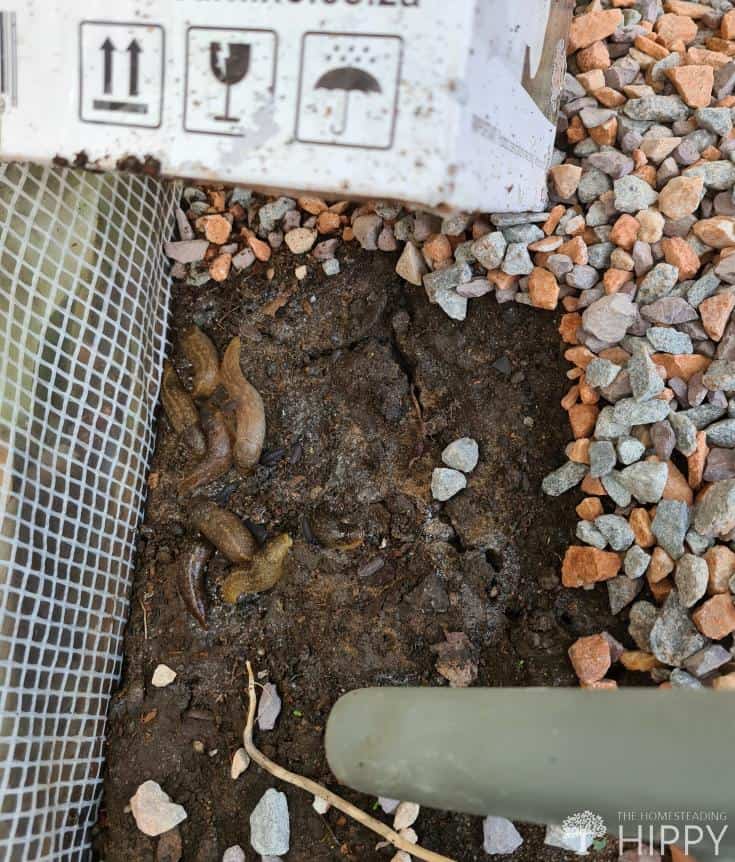
Conclusion
I want to reiterate that there are humane ways to rid your garden of snails without upsetting the environmental balance.
Barriers are brilliant and they are a long-term solution as the snails will move on if they encounter a barrier.
Many homesteaders slaughter their own cattle, sheep, pigs, etc. for food. Many people rely on hunting for food. These folks probably do not have any issues with killing snails and slugs.
How you choose to approach the problem is entirely your choice. This article serves only to educate you on the various methods available for addressing the issue of snails and slugs in your garden.
I hope that you have enjoyed this article and that you will go away with valuable knowledge to rid your yard of these slimy critters long-term. Let me know in the comments below what you do to rid your beds of snails and slugs.
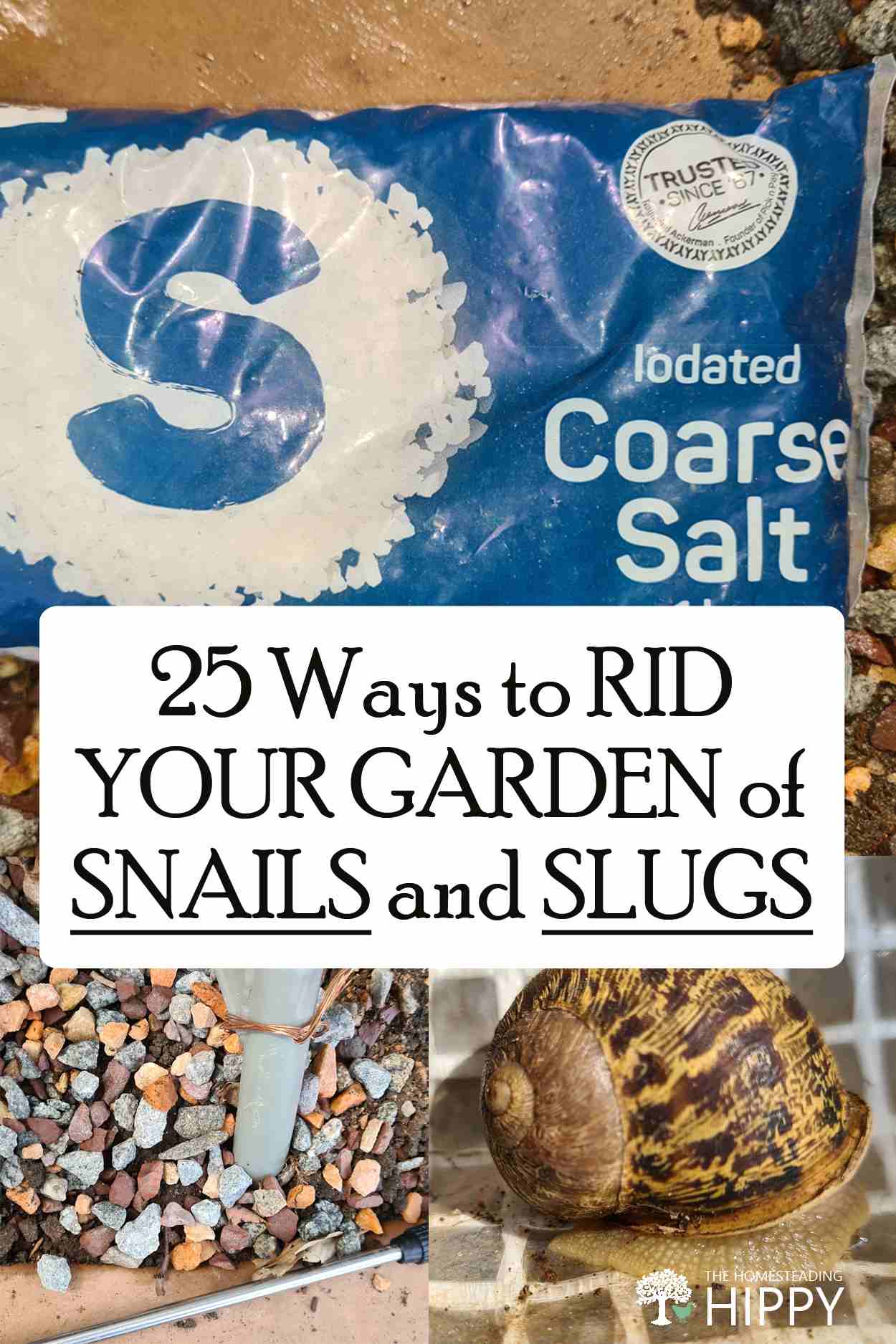

Di-Anne Devenish Seebregts was raised in an environment where daily life consisted of hiking, environmental conservation, growing fruit and vegetables, and raising poultry for meat and eggs.
She combined her passion for the writing word with her love of the pride that comes with not relying on others. She raised three children (who are now adults) to value the environment, and understand the value of being self-sufficient.
Find out more about Di-Anne on our About Us page.
